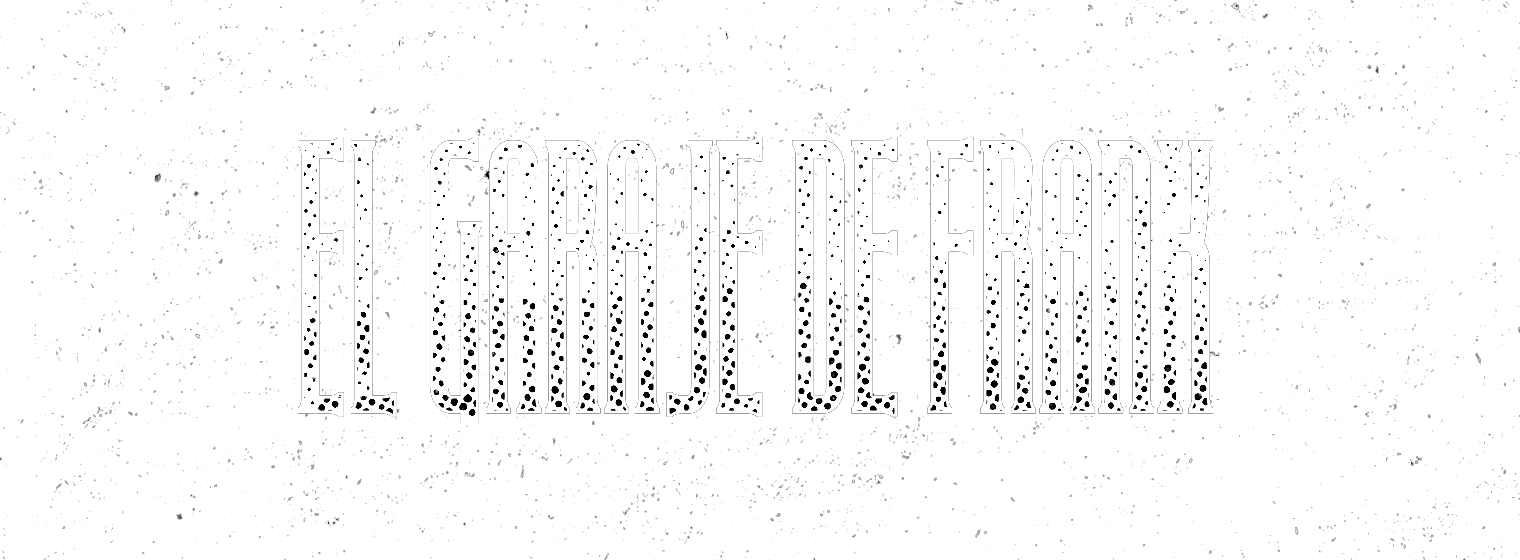It’s really quite strange to say in Spanish that we’ve interviewed La Muerte. But in this case it’s true, as we’ve spoken to Dee-J and Marc du Marais, two of the founding members of one of the most personal bands of the eighties. They will be playing on November 1st, at Belgian Sinner’s Day festival. And we’ll be there to see them.
Header pic: Samuel Carnot
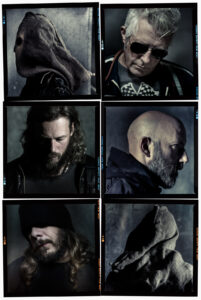
Pic: Danny Willems
—The roots of the band are in a funky band called Marine, can you please tell us more about this?
—Dee-J: You could say that Marine is at the base of the roots of Allez allez, but definitely not at the roots of La Muerte.
Marine was Marc’s band that had been disbanded, dead and buried for probably at least a year and a half when he got in touch with me. It would be like saying my previous band(s) is the base of La Muerte.
Personally, I had nothing to do with Marine so it’s hard to hear it’s at the basis of the band. Especially since it has absolutely nothing to do with it musically, neither closely nor remotely. So, it’s not even a sequel.
La Muerte was a new project, a new band that we started together. On a blank page. Marc had indeed played in Marine, and, of course, I was surprised when we got in touch, but it took me about 15 minutes of rehearsal with him to understand that he had drawn a line and moved on to something else. It was quickly clear for me that the motherfucker really meant it!
—The band has some blues influences. Were you into classic blues or was it an indirect influence?
—Dee-J: Indirectly. Blues is all around us in everything we listen to, it is somewhere at the base of rock music. But we’re not purists. The purists hated us for our sacrilegious approach of the blues. We took the elements that we wanted, that’s it.
—Marc du Marais: For the rest we are not pure blues, we have influences but they are completely diverted and it sounds more trash blues than blues; besides the blues purists have always been suspicious of us.
—The band always named Birthday Party and Stooges as influences. Were you also interested in The Gun Club, another band with strong blues influences?
—Marc: We especially had a connection with the Australian scene. The only one we felt close to at the time.
The Scientists would record on our label, we would also support them in Belgium. There’s also the Swedish Leather Nun, we played with them in London, but also Jesus and the Mary Chain with a tour in England.
—Dee-J.: But we weren’t only inspired by that kind of band. The whole new Australian scene like the Scientists as Marc said, but personally also everything that was non-conformist that brought something new, energetic and different. Each country had its ugly duckling… Inca Babies for England for example, The Leather Nun in Sweden, Butthole Surfers in the States, … Or the Gun Club, indeed. I think there was a common movement. For sure we were doing trash blues way before John Spencer, as I think we were probably doing stoner or grunge as well before the words got even invented!
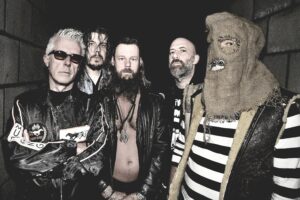
Pic: François Berlant
—Why did you choose a name like La Muerte in Spanish? Also, your first song released was in Spanish “Danza de la Cruxifixion.” Did people have problems pronouncing the band’s name back in the day?
—Dee-J: When we formed the band, the bass player who joined us was Basque-Spanish, in fact, rather radical Basque!
We were already thinking very hard about the idea of not having an Anglo-Saxon sounding name. At the time, Marc had immersed himself in the works of García Lorca, and his poem Viva La Muerte jumped out at him. The Spanish bassist was obviously not going to contradict him!
The pronunciation in some countries was indeed laughable! Especially the Anglo-Saxon and American. Spain was doing OK. Dunno why! Probably not the best commercial move we made as a brand, but fuck it.
—The band’s first EP was called The Surrealist Mystery, and Didier has always described the band as the mix between Dali and the Stooges. What were the elements of the Surrealist movement that interested you?
—It all fit very well with the concept we were trying to describe, the music we wanted to make. “The missing link between Salvador Dalí and The Stooges.” I think it clearly reflected what you’re gonna get!
But far be it from us to lock ourselves behind a movement.
For us it was the freedom to do what you want to do at any given time. I think if you look at our whole career, there’s not a moment where we’ve made any concessions!
But we’re not a surrealist band per se. We took certain elements that we liked. For example, some songs were written in automatic writing, the cut-up technique. Or our first press release: two full pages to explain the band’s universe, all this without one single punctuation mark! Surrealism was covering different activities: visual arts, literature, film, music… The choice of experimentation. We were also touching different disciplines. We did the music and the texts, of course, but we were also into the graphics, videos, production, … We wanted to learn, touch and control everything.

Pic: Danny Willems
—In Scorpio Rising, the band included a couple of songs that were part of the soundtracks of some B-movies. The band has also shared this aesthetic. Apart from the Marc Desmare’s connection, what did you find interesting in B-movies?
—Marc: Our passion for genre film, B to Z exploitation cinema goes back to our discovery of punk, it is for us closely linked by the way it works. We have always been fascinated by the small Masters; the weird films made with 3 times nothing. It’s the closest cinema to us, outside of the big studios… It’s simple and direct, and we have drawn our universe from it.
DIY power! We prefer muddy roads to motorways!
But there is also American Gothic literature… Harry Crews, Flannery O’Connor, Tennessee Williams and the noir thriller James Elroy, James Crumley…
It deals with themes of death, illness, alienation, degeneration, just as it uses a harsh vocabulary, tackles taboo and sulfurous subjects.
The atmosphere sometimes takes precedence over the plot, the atmosphere is swampy, sticky, highly subversive. There are no heroes, only anti-heroes. There is also violence, which can take a comic turn in gore films.
An extreme cinema whose themes La Muerte has often exploited.
—The band’s first LP was Every Soul By Sin Oppressed. How do you remember the recording of one of your more iconic works?
—Dee-J: It was pretty much DIY. We already had three 12’’s under our belt. And we had already changed drummers several times. The line-up seemed to stabilise, and we went into the studio without too much pressure. A lot of the album was written on the spot. A song like “Every soul”… was only recorded twice, by the third time we had lost the momentum. We had a small studio but very little technical equipment at the time. A 16-track analogue recorder, analogue table without automation. Without going into too much technical detail, we used every trick in the book to optimise this 16-track system. The mixing was manual, which means that each mix was different from the previous one. We obviously ended up with hours of mixes to listen to and choose from. We knew we were doing something that would stand out from the Belgian music scene. On the other hand, we had the luxury and the time to experiment. On two songs, it was the result of our encounter, months before, with the one and only ARNO (ex TC MATIC). Everybody was surprized to see this established artist collaborating with the most controversial band in Belgium!

Pic: Samuel Carnot
—What happened during the Death Race 2000 tour? Did you have bombing threats of the extremists French Catholics? Can you please tell us more about this?
—Dee-J.: On the album, there was a song called “Ecoute Cette Prière,” which obviously was, maybe not anti-religious, but certainly mocking religion and prayers. At that time the Christian extremists and the lecturers felt quite strong and were quite sensitive to anything that could go against their ideas. They had already tried to ban the screening of Martin Scorsese’s The Last Temptation of Christ, also in Paris. At the same time, we were also playing in Paris, and there was a rumour that Christian extremists would try to bomb the concert hall. In the end, apart from a few policemen at the entrance of the hall, the concert went on as usual. “We thank you Lord for the free publicity, alleluia!” Decades later, different religion, same shit.
—Experiment In Terror was a cover album. Why did you choose to do an album like that in that period of the band’s career? La Muerte also recorded previously some interesting covers. How did you choose them?
—Dee-J.: The fact that we were having a lot of fun reinterpreting some of the songs led us to the idea of making a full-length album. I think it was a ballsy choice too!
Originally on paper we had chosen between 30 and 40 songs. Some of them didn’t make it any further than that, others we tried but weren’t happy with. Each song choice had a particular meaning, whether it was the artist, or the song itself, or another cover of the song. The idea was obviously to distort it and make it our own. I personally have a weakness for this album, because we put a lot of effort into it. The fact that I had to apply myself in the way I played, allowed me to evolve very strongly. I wasn’t the same guitarist before and after Experiment. It taught me discipline and rigorousness. Exploring and pushing my own limits.
You have to know that when we finished recording and fully mixing this album, we didn’t like the result, and we decided to erase the tapes and start all over again from scratch. Back to the drawing board. Structure, recording, mixing. As for the choice to make this album, we always wanted to remain free, and always did everything to not be categorized, and to remain free in our artistic choices. It was not an easy exercise! But I really enjoyed it! The different layers of homages… sometimes it was just the song, sometimes there were more layers…
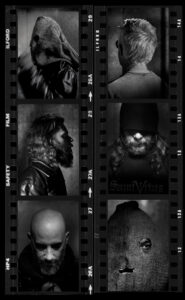
Pic: Danny Willems
—Marc: It was an opportunity to have fun by DE structuring songs that we loved.
But also, to show that our tastes had a wide range, film music, Blues standards, big commercial hits, blues songs, obscure songs…
It was also proof that we had a bit of a sense of humour, black humour, hehehehe everyone saw us as a dark and wild band whereas we had other assets. Pure happiness to record this kind of album but one was enough.
—A lot of years have passed after the split of the band in 1994. Can you tell us why it happened? In an interview you said that the band was tired, right?
—Dee-J.: Playing in La Muerte was not an easy thing. You woke up with La Muerte, and you went to bed with La Muerte. We lived for this band 24 hours a day. The original idea was: we would do everything to the fullest, make a record exist for six months, play everywhere we could and then disappear. In the end, the six months turned into 10 years, several records and a lot of touring in Europe. But it was also 10 years of combat because we weren’t really always in tune with the general musical landscape around us at that time. Everything was complicated: we had for example 10 drummers in 10 years. We felt like we had done everything we could, but we were exhausted both mentally and artistically. Three albums in a row. Compose, record, produce, tour and again. We were also into everything: from recording to artworks,videos… I read that Paul McCartney, when the Beatles disbanded, felt a sense of sadness but also relief. I remember feeling that too. Somehow that pressure was gone. And yet I was a bit lost or sad too. Nobody could understand why we stopped, just when the musical landscape had changed so much since the rise of grunge and stoner, for example. I didn’t know yet that the spectre of the band would follow me for years to come, that I would carry that “La Muerte” stamp with me and that somehow it would influence everything I did afterwards. Whether it’s as a Live mixer or a studio producer. I’ll always have the La Muerte stamp on me. On a personal level, in a year’s time I had a child, and I lost my father. Things like that put everything into perspective.
Even today, we still don’t get it served on a silver plate. We still have to knock ourselves to get somewhere!
—Marc: We ran out of petrol to continue, ran out of gas in the desert…
—Raw was a live album with a concert from the farewell tour. Was it easy to perform thinking that it was the end?
—Dee-J: No, it was OK it was intense but not too difficult. You don’t have too much time to realize it. We were in a sort of whirlwind. After this farewell tour in different European capitals, we had to do a lot interviews, there was a lot of pressure…everybody wants a piece of you before you disappear and that’s when you realise that the end is near. But of course, we didn’t want to leave by the back door so we wanted it to be a concert that everyone would remember. There’s a lot of preparation work: preparing the whole event, the video team, the live recording, which is also in analogue. Everything was fine-tuned down to the smallest detail. We were surrounded by friends like Arno or Richard 23 from Front 242. At the end of the concert, we probably threw 300 vinyl’s or more into the public. Before that the audience had invaded the stage, we felt a lot of love that night.
—Why did the band choose the name Mustang Cobra for their return in 1999?
—Marc: For our first comeback, in 97, we promised the Dour Festival an exclusive, a first. But we needed to get back into the swing of things and do some try-outs beforehand… So, we had no choice but to play under another name.
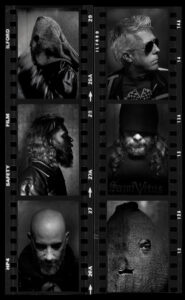
Pic: Danny Willems
That time we used STEVE Mc QUEEN EXPERIENCE.
In 1999, we had to do it a second time for another fest we were appearing…
We had a series of names that we found in our white trash americana world and the choice went to one of our favourite cars: Carrol Shelby’s 1967 MUSTANG COBRA.
—Dee-J.: One of these two bands, but I can’t remember which, was announced as a Japanese cover band of La Muerte hahaha!
—I think you said that this was not a reunion, but a La Muerte 2.0, as the band has three new members. How have these three new musicians changed the sound of La Muerte?
—Dee-J. Marc knew that I was totally opposed to the idea of reforming La Muerte. For me that book was closed. Even more with the old members. No personal animosity, but I didn’t think that artistically we could create anything anymore. And I also knew, like a separated couple that get back together, the same cracks could reappear after a while.
At first, I wasn’t keen on the idea of playing with La Muerte again. For 10 comebacks, 9 of them are disappointing. “It was better before” kinda thing… Also, more than 20 years had passed. But when Marc mentioned the names that were willing to play with us, I immediately found it very interesting and exciting. And as this line-up was only meant to last for one gig. I said yes.
When we talk about new blood, it’s not a gimmick phrase, it’s true. The gain of energy and creativity they put in is incredible. These guys have all pedigrees. Michel Kirby, played with Deviate and is also active in Arkangel, Length of Time and Wolvennest, Tino de Martino plays with Channel Zero, and Chris V drums with Length of Time.
They obviously influenced the sound of La Muerte. Well, I wouldn’t say influenced, but have taken it to another sonic dimension. Playing with a second guitarist, and not just any second guitarist, gave me a lot more possibilities to express myself. We shared the work. Everyone agrees that this is the best line up we’ve had. And I can only agree.
—How was received the return album from 2018?
—Dee-J: There was, of course, a lot of expectation. We had released the live album, but it was only original “old” material, we did this 12” ep with three songs that kinda showed the way we were going to, and the EP with Front 242. Everybody was very curious, so did we! But all the reviews we received were incredibly positive, both from Belgium and elsewhere. So much so that the label manager was wondering when a negative review would come. It was surprising to see how much the perception of the band had changed. Nevertheless, we still have to fight like it used to. Every gig is a boxing match.
—In 2017, the band was part of Gutterdämmerung. The tour also came to Spain, to the Azkena Festival, were you there? How do you remember the experience?
—Dee-J.: I was obviously aware the film. I was very surprised to get a call from director Björn Tagemose who apparently was a big fan of La Muerte and wanted to include us as special guest on the Brussels sold out date! Marc wasn’t first too keen on playing on this project, the idea of playing another band behind him wasn’t very appealing for him. I was totally up for it and I ended up convincing him, you don’t pass up such an offer to play with Iggy pop’s band! The band’s guitarist is Kevin Armstrong, who had played with Bowie, among others, and has a pedigree as long as my arm. So suddenly, I was the one who was impressed. I was supposed to show this guy how to play my songs! I have very fond memories of him. The team welcomed us with open arms, going out of their way to include us properly in the show. It was an honour.
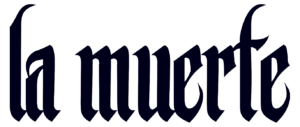 —We are big fans of cinema so we would like to ask about the career of Marc Desmare. He has done Doubleplusungood and some shorts so far, right? Can you please tell us a bit more about this?
—We are big fans of cinema so we would like to ask about the career of Marc Desmare. He has done Doubleplusungood and some shorts so far, right? Can you please tell us a bit more about this?
—Marc: Marco Laguna aka Mark KR Lagoon aka Marcello Dellamare aka Marc Dumarais.
When La Muerte stopped in 1994, I decided to be a director, very quickly I wrote 2 short films NITRO NICKY 1995 and NICKY THE STRIPPER 1994.
My main intention is to find the codes of exploitation films, B movies, whether European, Asian or American.
I quickly assimilated the methods of Roger Corman, the pope producer of B movies and commando films shot in 16mm. I also subscribed to Psychotronics to develop my knowledge of the genre.
I also take a lot of pleasure in the soundtrack as I am a fan of film music myself.
These first two shorts are directly inspired by the work of Russ Meyer, whose buxom actresses do not hesitate to humiliate men.
You will have understood, I like eccentric, wild, dreamlike, delirious, broke, sex and violence cinema!
For the record: Nickie St Gilles, the main actress, became Pet of the year in 1999 in Penthouse
Then I made DAGO CASSANDRA, a short film which will become a feature film DOUBLEPLUSUNGOOD with WILD DEE, singer of the Rockabilly band The WILD ONES
Then I made an Xtreme documentary BONNEVILLE OR BUST about the speed records on the Salt Lake in Nevada/Utah
And another experimental documentary DRAG STRIP 69, it’s the story of a mechanic who dismantles a V8 engine and has diabolical hallucinations made of stripping and drag racing… It was screened at the Paris Cinematheque and in Madrid as a pre-program of Pleasure Fuckers.
I also directed more than 20 clips for electronic and rock bands… Vitalic, Rinocerose, ExcuseExcuse, Les Grys Grys….
In 2018, I finished my first feature film DOUBLEPLUSUNGOOD after 5 years of shooting with a budget of 50000 Euros and in 16MM…. released on DVD by ZENO PICTURES, the soundtrack by WéMè records.
In a country that doesn’t exist, Dago Cassandra, a small crook, returns to his kingdom after 15 years of exile with a divine mission: to kill the 12 apostles of Lucifer represented by the pyramid of power… His sacrifice will lead him into an endless murderous spiral!

Pic: Danny Willems
—Didier, you have collaborated twice with Jean-Marc Lederman, first in Three Angry Poles and later in Ether. What do you remember of these two projects?
—Dee-J: You have done your research! In both cases they were initiatives of Jean-Marc. We already knew each other, through our common label, common friends and as the scene is small, everybody knows everybody. At that time people didn’t have home studios, you could work at home with electronics, but back then there was no descent interface to record guitars, for example. But everything else was easy! You produced something, the label had a small studio, you showed it to the label, they thought it was good, and signed the deal and 3 months later, the vinyl was out in the stores!
Nowadays it wouldn’t be possible to release a band that doesn’t intend to play live, but just make a record for fun. You’ll need marketing plans, visons, etc.
Back then I played straight into the studio. I had heard the songs before, of course, but at that time you had no facilities to play at home on recorded music!
Ether obviously, it’s something else… JM was working for Front 242 at the time.
We had made a demo, which they heard and liked. So, they started to finance us, paying us the studio to do more songs. This time it was maybe more a joint project of Jean-Marc and me. We didn’t even have a singer yet!
Eventually, we found a deal in Germany very easily.
The big difference was that La Muerte was no longer there, but the desire to play live was still there. Jean-Marc didn’t want to go back on stage after his last tour with Weathermen, so I put together a band around me. Apart from the singer, there was the bass player of La Muerte, two members of Uncle Meat, and the guitar player of Cyclone. We did a few gigs, like the Dour Festival, the pop kom with Gang of Four, opening for Die Krupps… We started the demos for the second album, then things stopped, for legal reasons I think I’ve forgotten now.
—How do you remember your time with your label Watt’S On Records?
—Dee-J: I was working in the past with the label Soundworks. After La Muerte I started to work as a studio producer. I saw a lot of interesting bands that passed by me and who didn’t really know where to go with their album, that’s when I got the idea with two others to create the label. At first, I was also supposed to be the PR, because of my so-called notoriety, but I soon realised that my knees were too stiff to crawl! So, I concentrated on the music. I’m quite happy with what we did at the time. We were only singing new bands. No hustle contracts. Free to go bigger somewhere else after… Nowadays you have to be dedicated to have a indie label… Not sure I would do it now.
—How has Covid affected your lives?
—Dee-J: We had just decided not to play that year anyhow. I found the composition process of the previous album too slow. Rehearsals and compositions were very time-consuming and tiring. So, we decided to compose separately and gather our ideas later. So, for us this lockdown didn’t bother us too much. We worked at our tempo, Mark with Deha, Kirby and myself… And all of a sudden, we realised that we had enough material for the album. Again, we worked in a different way, we programmed the drums and composed the songs entirely virtually. Then we went back to the studio to record everything for real. For the mixing, we often worked online with Deha who mixed the album. He was at his home and I was at mine and I had real-time access to his computer.
Of course, it wasn’t all fantastic either. I do a lot of live mixing, and all of a sudden it stopped. Before that, I had left the studio I worked for, having in mind to expend my home studio to be more effective. I had the opportunity to produce or mix the live albums of the BRASSERS, a mythical band from the early 80s, the live album of WOLVENNEST and the live DVD of The NEST, recorded at Roadburn Reddux Festival.
—What can we expect in the future of La Muerte? The awaited reissue of Raw?
—Dee-J: The Raw box should have been out by June 2021. Unfortunately, with the shortage and the incredibly long delays in the pressing plants, it will only be released in the first months of 2022. Everything is ready, the 40-page book, which looks fantastic, the insert, the postcard, the download code, the luxurious boxes, the stickers… All we need are the vinyls!
We have also finished an album. Probably the continuation of the previous one, but above all the heaviest and darkest we’ve ever done.
When and where it will be released, we don’t know yet.
—What can you please advance us of your future concert at Sinner’s Day?
—Dee-J: When we reformed, we avoided any kind of festival that looked backwards. We wanted to make it clear to everyone that we didn’t want to play the nostalgia card, and that even though we had a past we were looking to the future. In the meantime, I think it’s clear to everyone where we stand with La Muerte, and that we’re not here to do a best-of-our-songs-from-back-then. Today we can come to Sinners’ day, I think people will know what to expect. We’re not going to play the nostalgia card, and will sound like we sound today. Of course, there will be some old songs in the set, even one from the first EP. But we won’t play Wild Thing, because that would be too easy… We had our first show in September this year. Felt a bit odd. In the meantime, we had some more, and I can notice, we’re getting back in power, more by every show. Surely we will bring videos, as we did the last time in Brussels.
